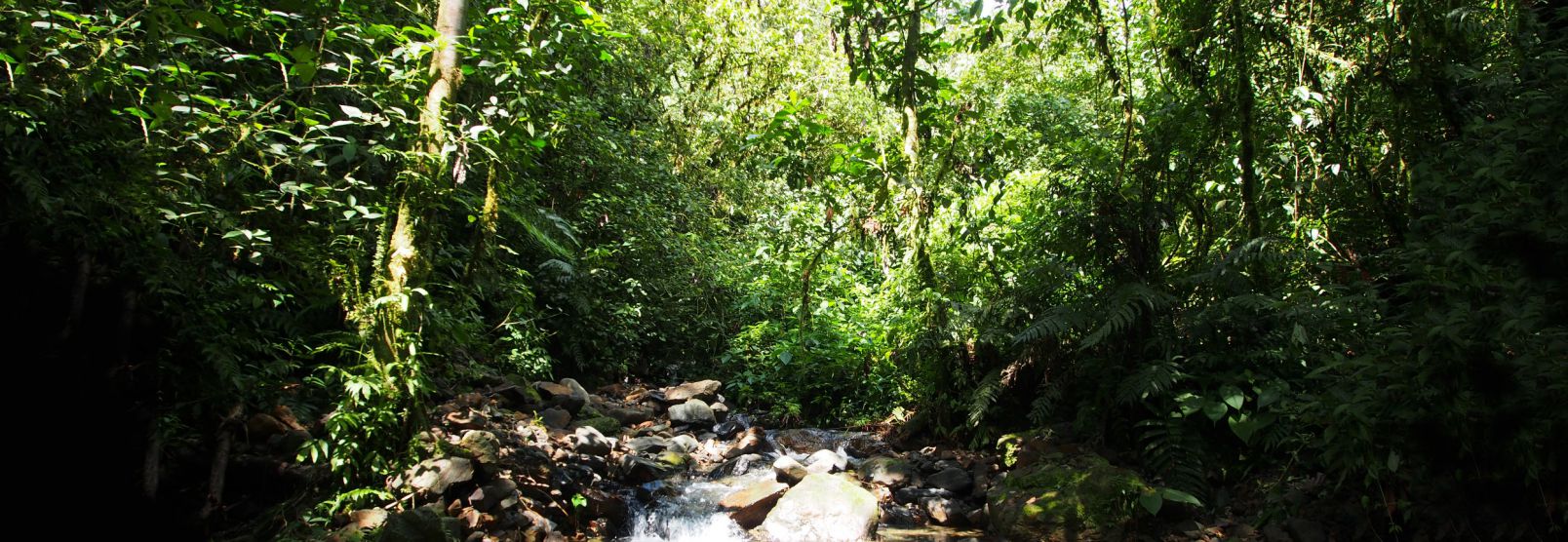
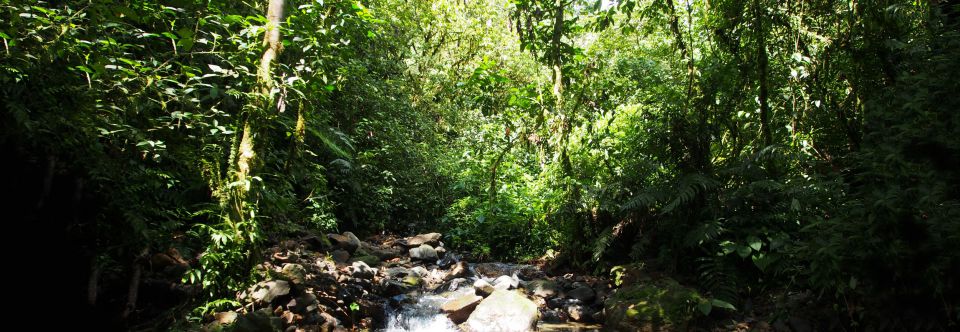
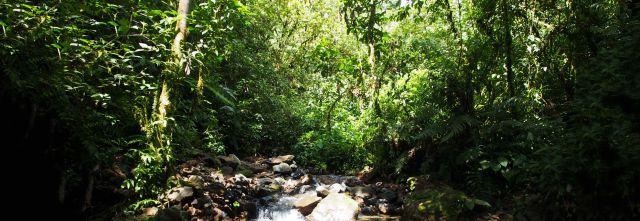
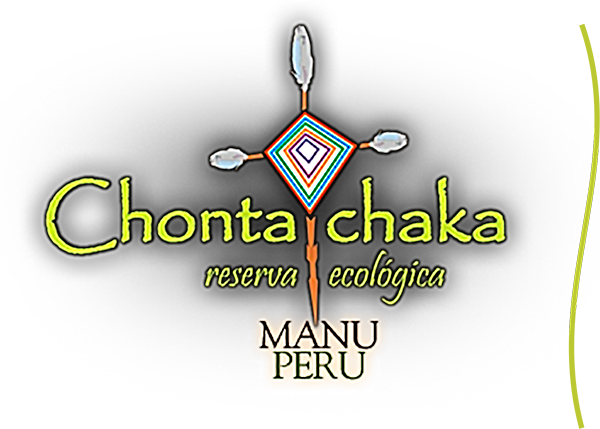
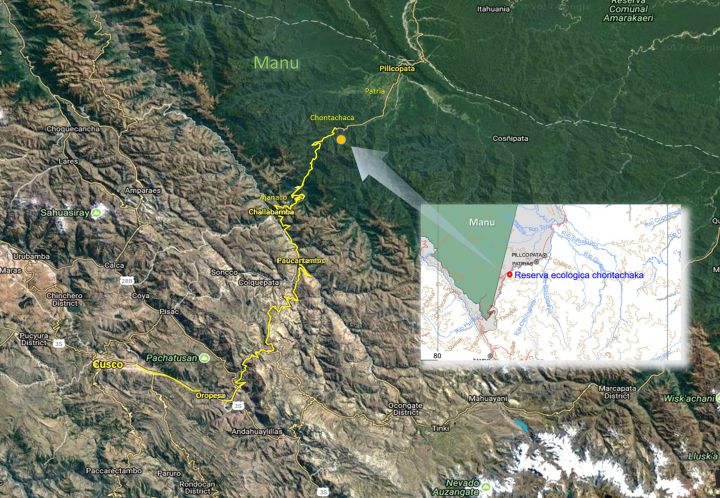
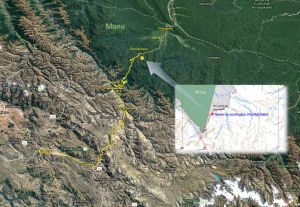
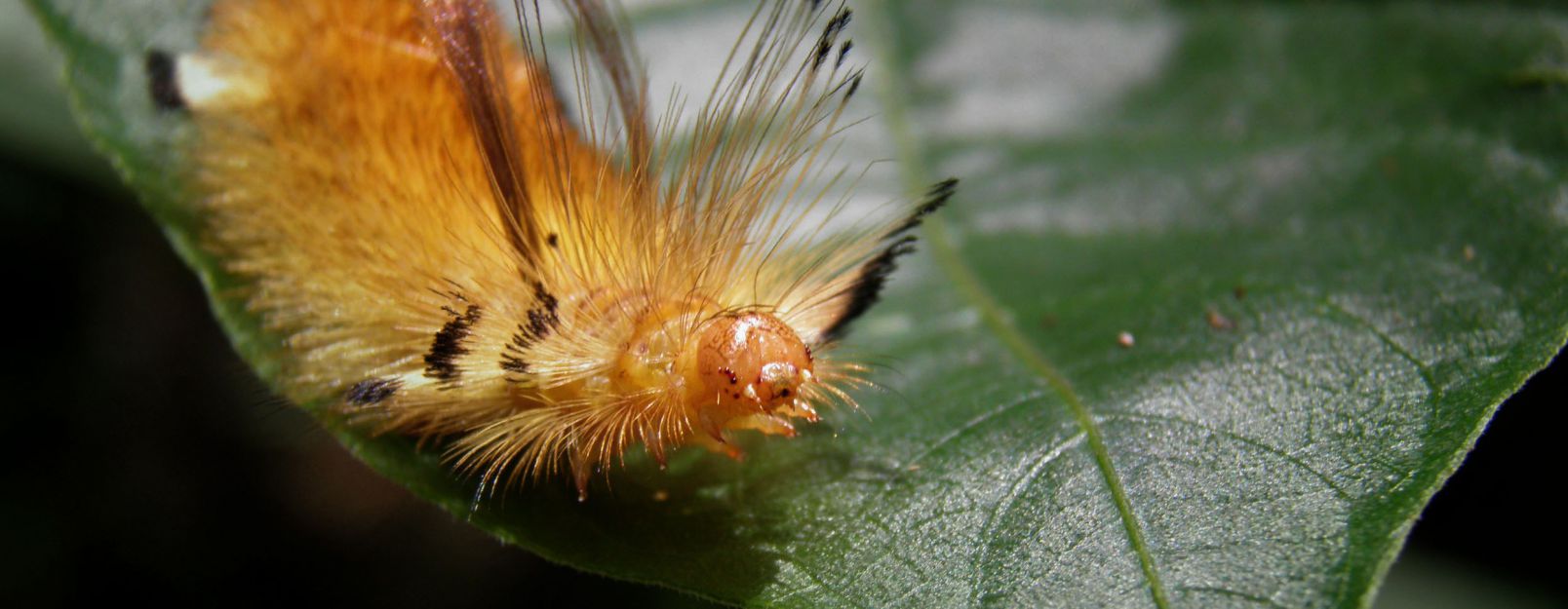
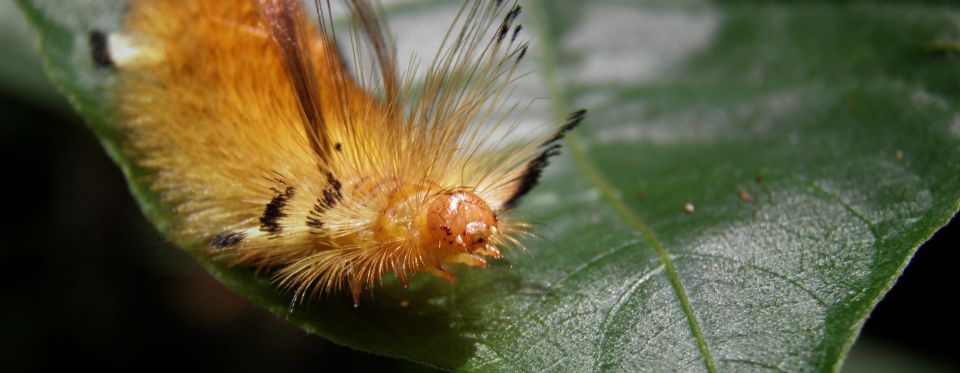

In our Reserve we can observe butterflies like: Morpho menelaus, Morpho achilles, Diaethria spp., Marpesia sp. and also other butterfly species restricted to the forest like: Cithaerias pireta, Mesosemia sp., Napeogenes spp., Oleria sp.; Hyposcada sp. that fly off and rest along the shoreline and on stones along the river and creeks.
Along the creeks on both sides of the trail we also can observe numerous bird species - although this means to go a bit off the main trail –, like tanagers, traupids, hummingbirds, parrots etc. the calls of which will be with us all the time
In some of our trails you just need to wait for Woolly Monkeys, Lagothrix lagotrichia, to pass through in groups of 6 to 8 individuals, with the leading male that is larger compared to the other members, always ahead of the group..will be able to observe them feeding on leaves and fruits of trees like “shimbillo”, annonáceas, lauráceas, etc. and looking for insects in the tree canopy, inside old or rotting branches and under the leaves.
The cock-of the-Rock (Rupicola peruviana) which can be observed perched, posing for each other or raising their crests for attracting the females' attention.
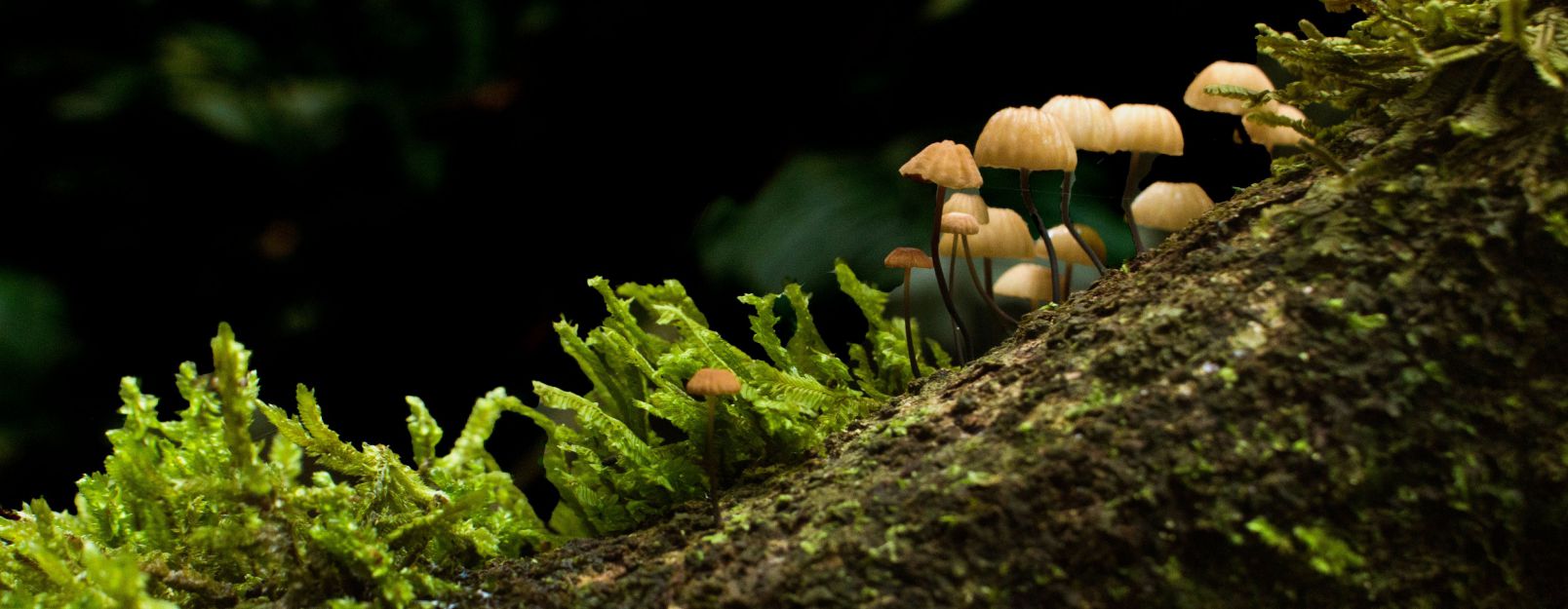
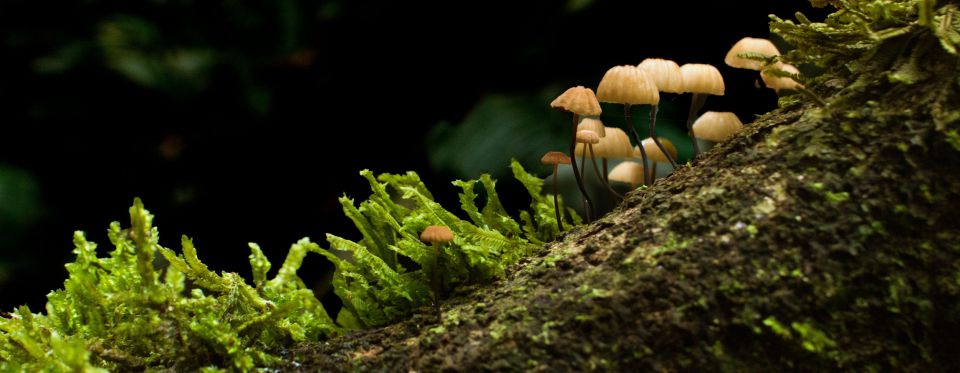
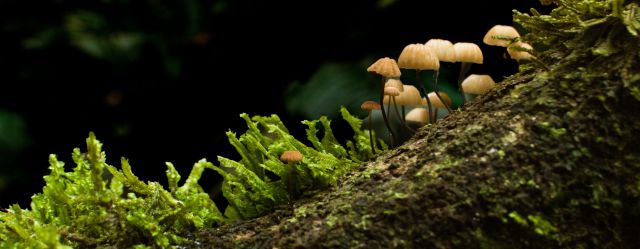
Manu is one of the most biodiverse regions in the world. Here it is possible to find all the variety of ecological floors that exist in the Amazon and this makes one of the most appreciated protected areas.
From the "cloud forest", between the 600 meters above sea level and the 1650 meters in the fog it is constant to cover a splendid landscape full of vegetation,here there are trees up to 30 m high that are invaded by moss, orchids and ferns, forming a dense forest interrupted only by small streams and waterfalls that are born and lost among the vegetation.
At present it is estimated that this area contains no less than 200 different species of trees with a density that can exceed 700 per hectare.
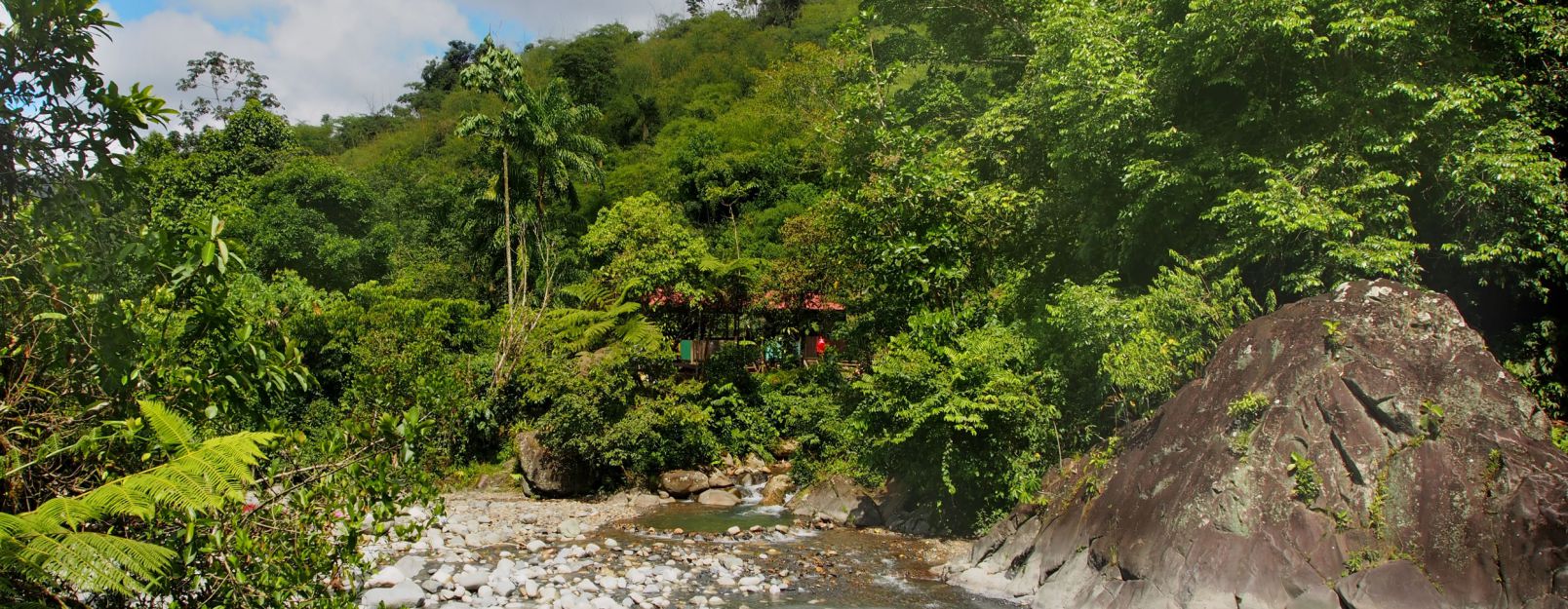

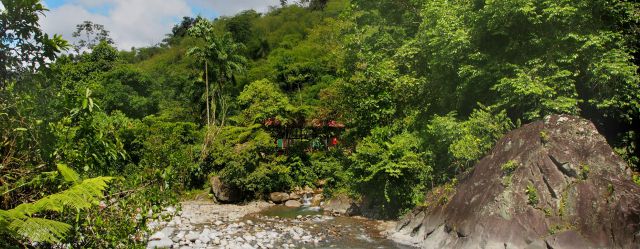
We have a capacity of accommodation for 24 people with the following distribution:
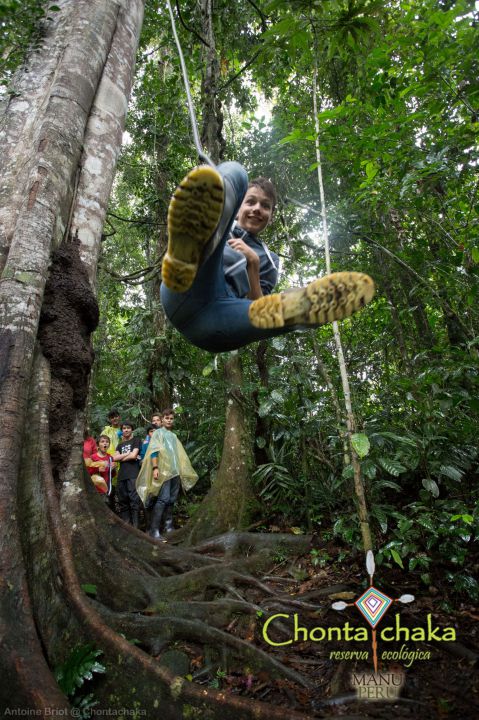
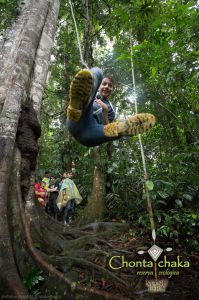

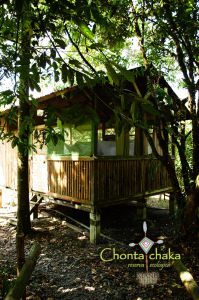
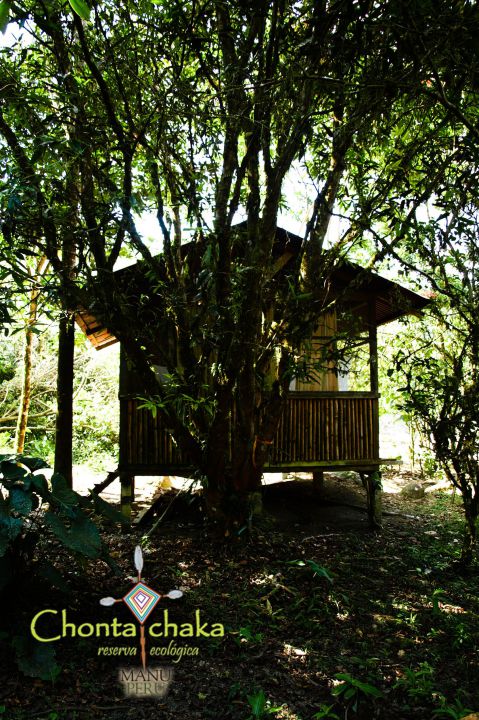
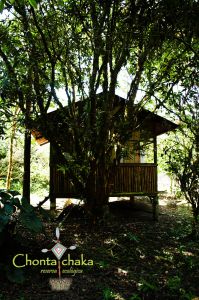
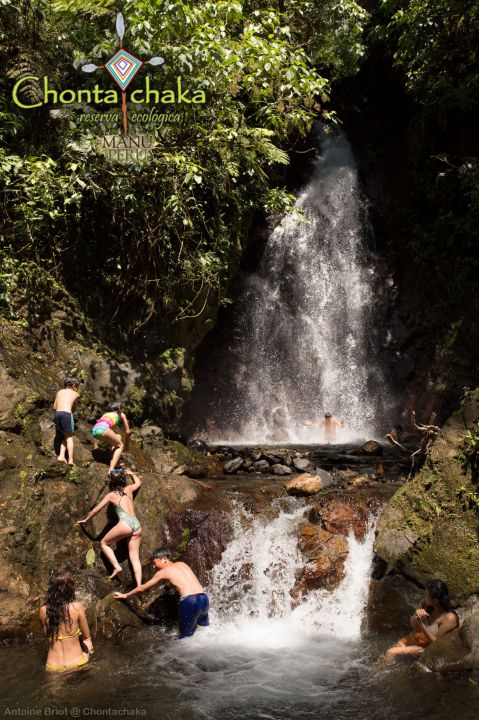
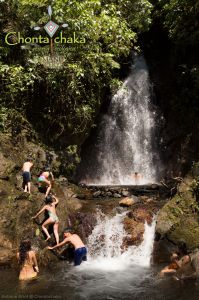
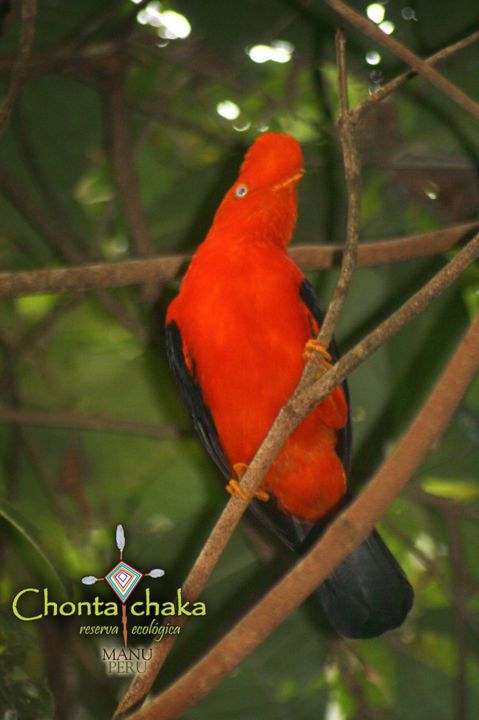
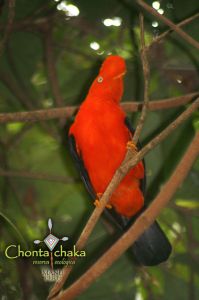
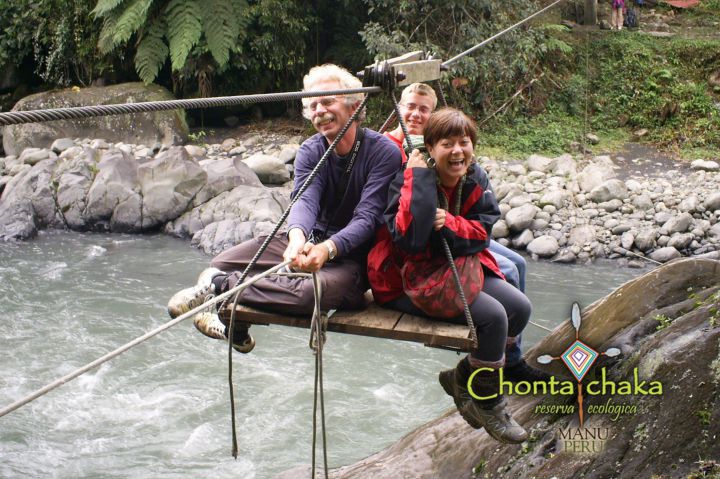
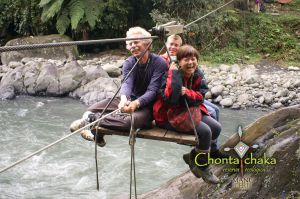
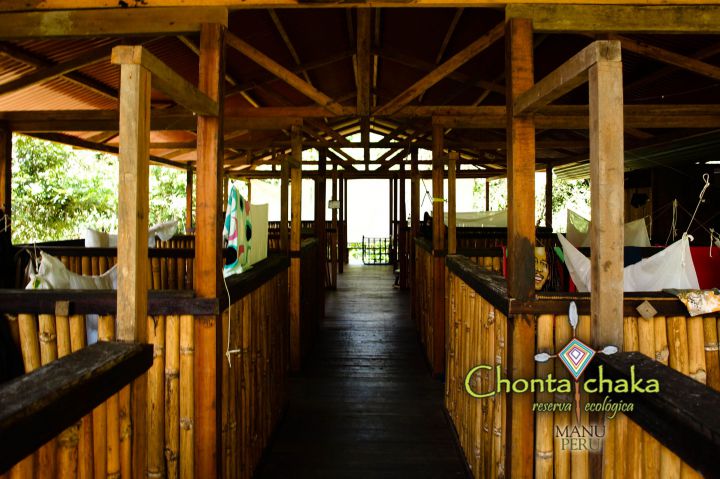
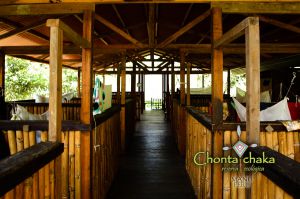
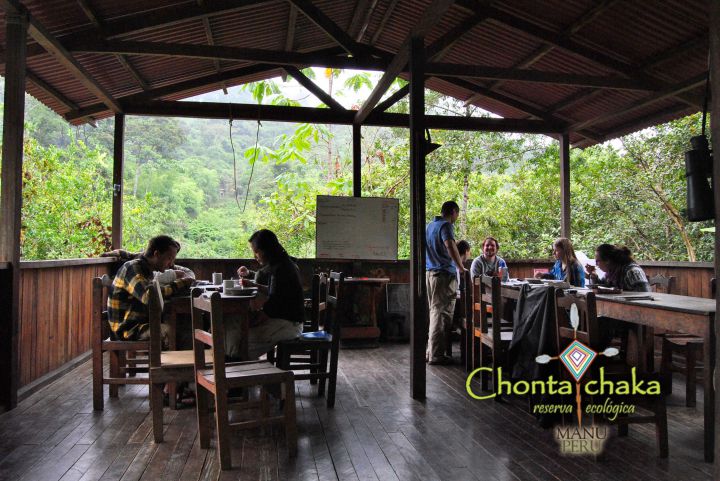
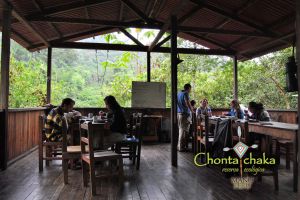
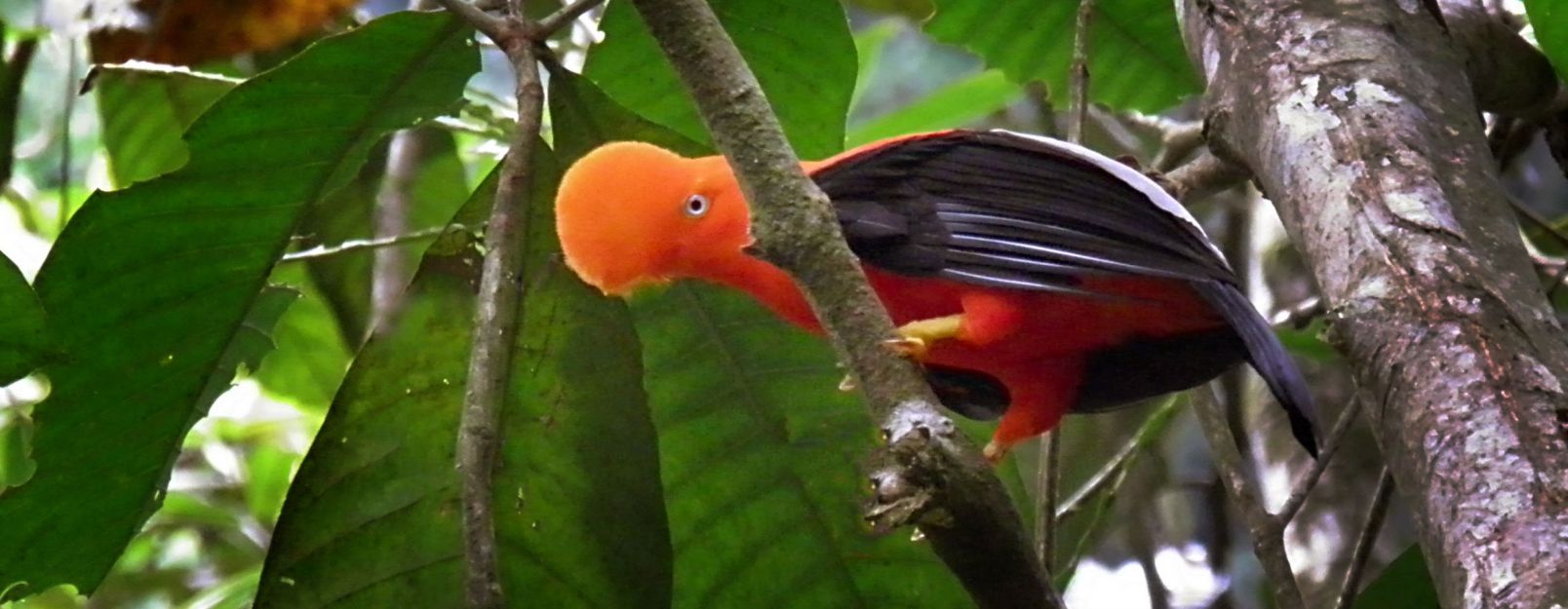

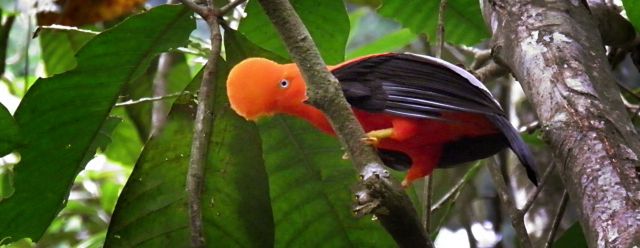
On relatively even terrain and 750 metres long, the access from the lodge is by following the course of the river upstream on its right bank.
On this trail we can observe butterflies like: Morpho menelaus, Morpho achilles, Diaethria spp., Marpesia sp., Hyposcada sp. that fly off and rest along the shoreline and on stones along the river and creeks that one must cross on the way (for this reason rubber boots are necessary). Later we enter the forest that has experienced the extraction of timber species which has originated the presence of bamboo (Guadua weberbaueri) that grows in patches called “pacales”. This is one of the interesting ecoystems of the rainforest due to the presence of specific endemic species, principally birds that have evolved to make their exclusive existence in this ecosystem possible.
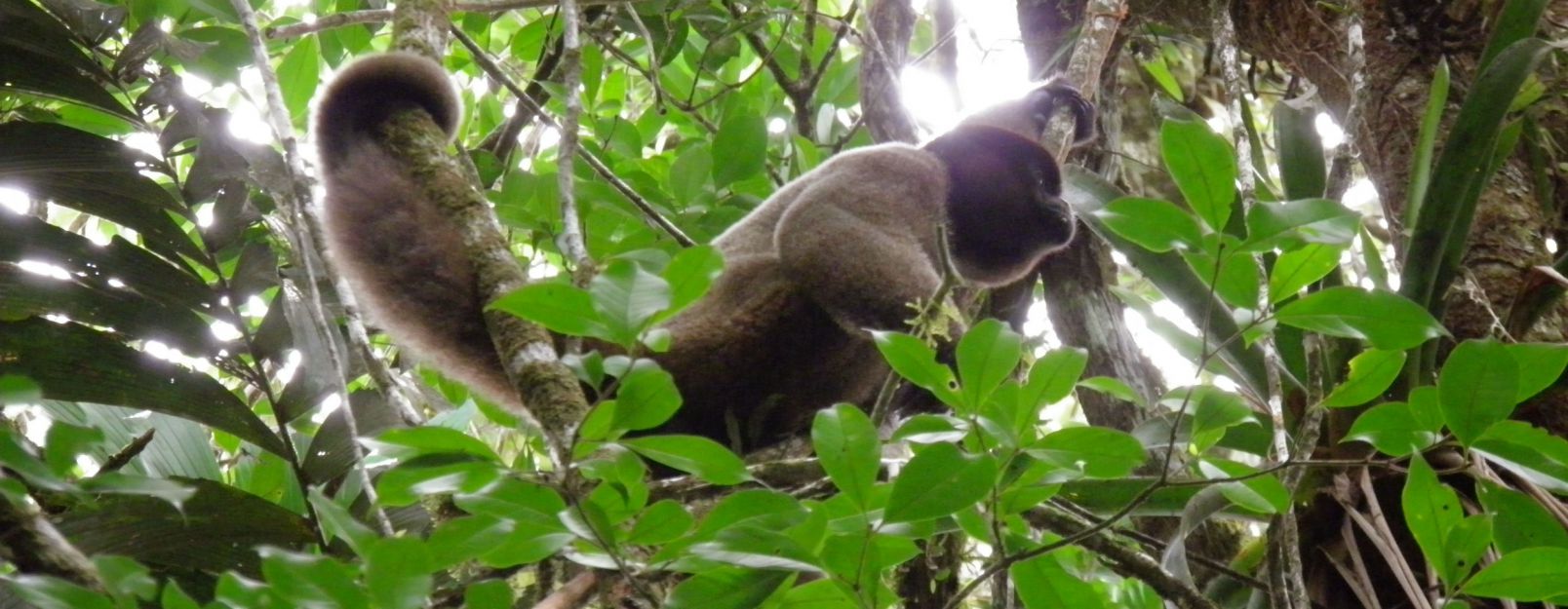
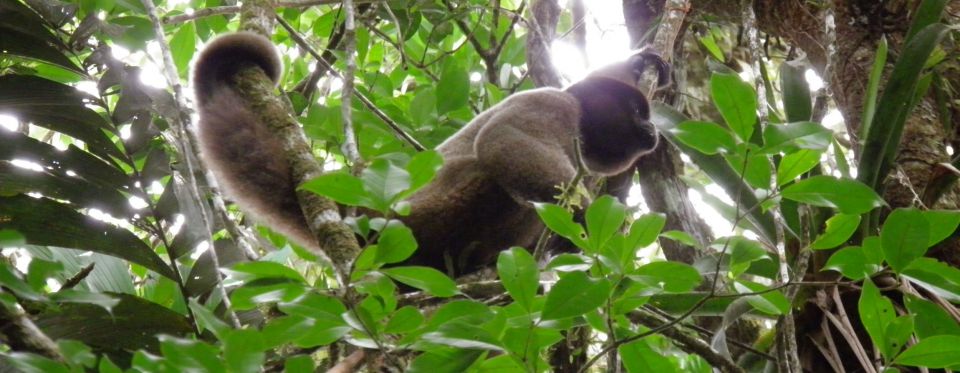
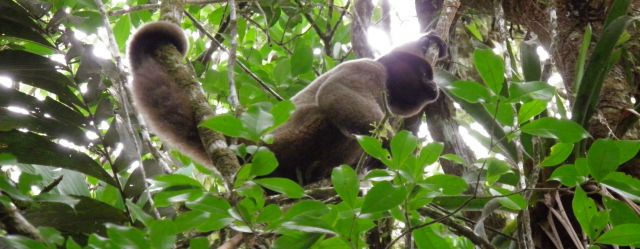
This trail is located in the foothills of the plot. For this reason it leads through some relatively steep parts, with the presence of two steep slopes. From the lodge to the area where monkeys can be observed it is 900 metres to go. Rubber boots are necessary as we have to cross stream a number of times.
It is not difficult to walk, although the two steep slopes will demand some effort that is worth while making. On the way we can observe other butterfly species restricted to the forest like: Cithaerias pireta, Mesosemia sp., Napeogenes spp., Oleria sp.; we also will see trees of a considerable diametre like “ojé” or “leche-leche” (Ficus sp), Moenas (Lauraceae), “shimbillos” (Inga spp), Aguano or Tornillo (Cedrelinga cataeniformes), Cedrela sp.; Palms like Wettinia angusta, Geonoma sp., Iriartea deltoidea or “chonta”. Along the creeks on both sides of the trail we also can observe numerous bird species - although this means to go a bit off the main trail –, like tanagers, traupids, hummingbirds, parrots etc. the calls of which will be with us all the time.
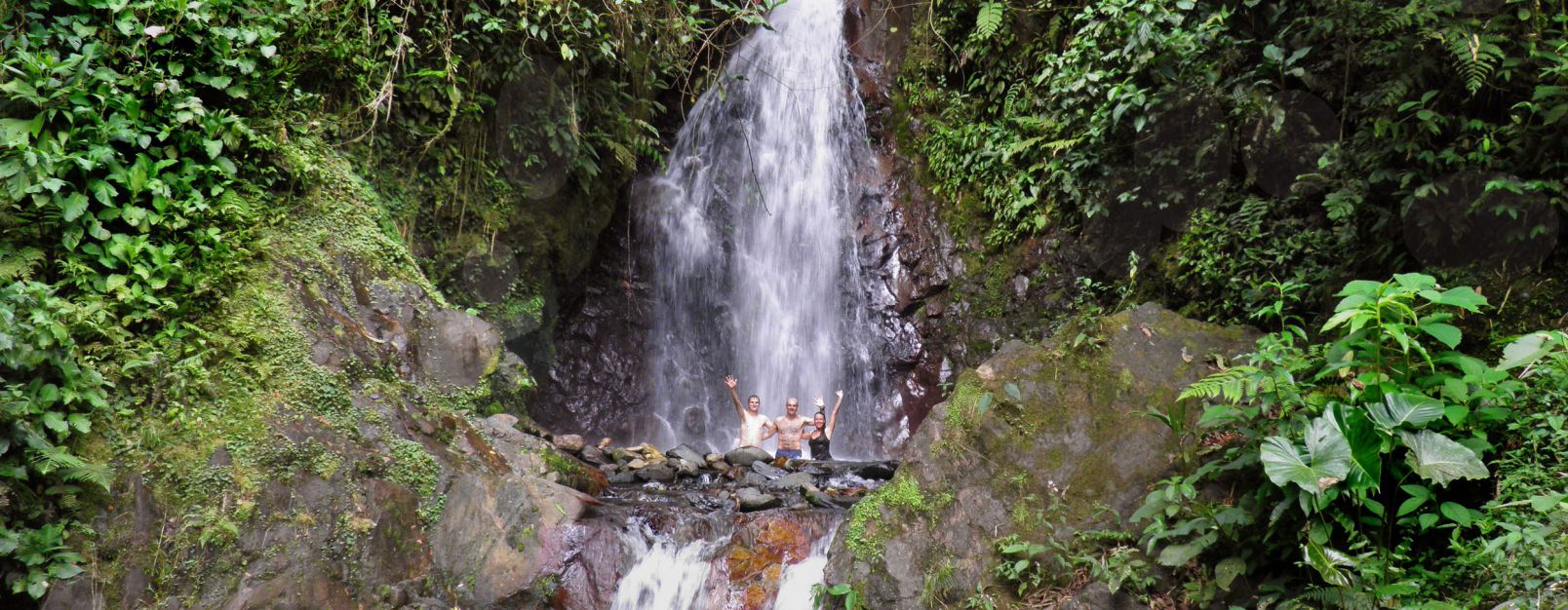


Located at approximately 700 metres from the lodge, this trail is less difficult, without steeps parts, although we must cross the creek that leads us to the cascade several times.
On the way it is possible to observe some orquids on the branches of trees and others that are terrestrial like Malaxis. Numerous and diverse butterflies join us on our walk: Morphos, Altinote spp., Castilia, Eurybia, Mechanitis, etc., as the songs of different birds like swifts, trogons, tanagers, etc. ready to be recognized by listening ears. We also can observe diverse plants with showy flowers that can be used as ornamentals: Alloplectus erythroloma, Drymmonia sp, Ruellia, Psychotria poeppigiana, Heliconia spp. and other interesting tree species like the Siparunas, which are aphrodisiacs, principally for women, if prepared correctly.
After a walk of 30 to 40 minutes, as we approach the cascade, we can hear the sound that the waterfall produces. Then, before our eyes, we can observe the 10 metre waterfall that has formed two natural pools at its base where we can have a good bath or, if you like, feel the energy of the falling water.
In general terms, wherever you walk on the plot, it is always possible to find or see something that calls our attention or that is of interest, be it on the trails or near the lodge, like small insects, nocturnal animals, amphibians, orquids, etc.